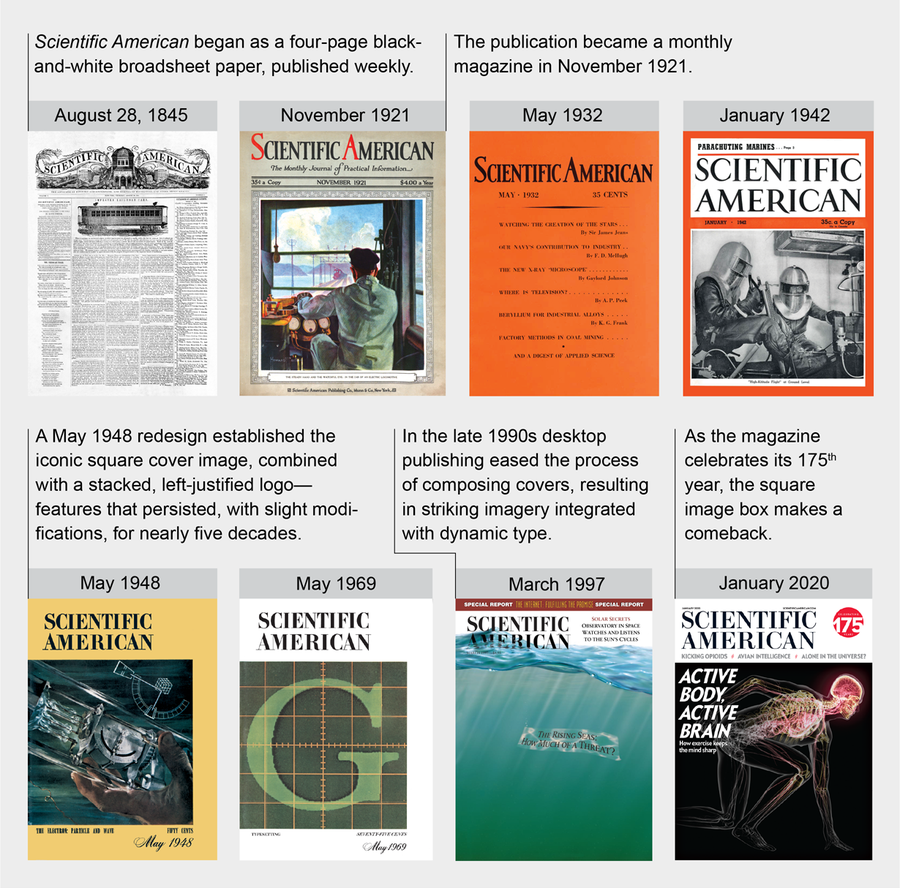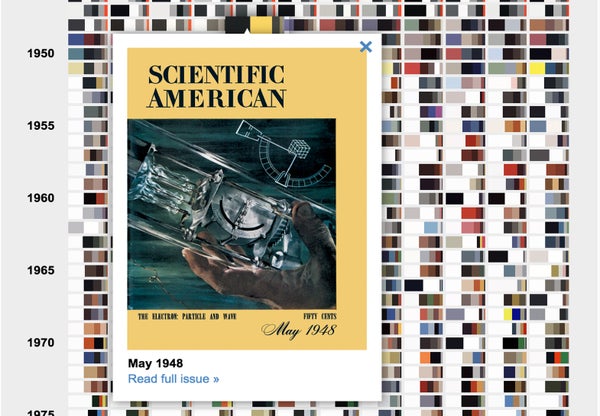Starting with its first issue in 1845, Scientific American has faithfully reported on technology used to produce the magazine. Some advances have been shown directly on the cover, such as a digital letterform in May 1969 (above). Echoes of other advances are visible in the cover color analysis here. After more than 75 years of weekly publishing—largely in black and white, with occasional washes of color—the magazine shifted to a rotary offset lithography press for covers in 1917, which allowed for the lush paintings that marked its transition to a monthly in 1921. In 1931 covers scaled back to two colors, likely to save money during the Great Depression. As the economy rebounded, a wider range of tones emerged in 1933 in the form of black-and-white photography. In 1948 the look changed again, this time because of a shift in ownership and editorial vision: color paintings returned, in a square image set on a solid background, which became white in 1952 and remained white for about 43 years. As desktop publishing arose at the end of the 20th century, designs became more experimental: images broke out of the box, ushering in a period of bold—primarily digitally crafted—illustrations.

Credit: Scientific American
On supporting science journalism
If you're enjoying this article, consider supporting our award-winning journalism by subscribing. By purchasing a subscription you are helping to ensure the future of impactful stories about the discoveries and ideas shaping our world today.
Covering Color Interactive
Scientific American’s cover corpus—5,148 issues from August 1845 through December 2019— is a complex yet intriguing puzzle.* In the interactive grid below, weekly issues are binned by year. A sample cover is revealed with a tap or hover: click through to the archive to view the full year. Although you’ll spot specialty issues with color covers or cover wraps intermittently as early as 1901, we start the color analysis below with the November 1921 issue, marking the shift to a monthly magazine. Each month’s tile represents a single issue. The vertical stripes indicate the top five colors on each cover, arranged from the color used most (at left) to least (at right).
*Our own digital archive occasionally presents a scan of the first internal black-and-white page as representative of the issue, as the full bound collection is missing some coversheets, and some rare vintage issues have handling restrictions.
